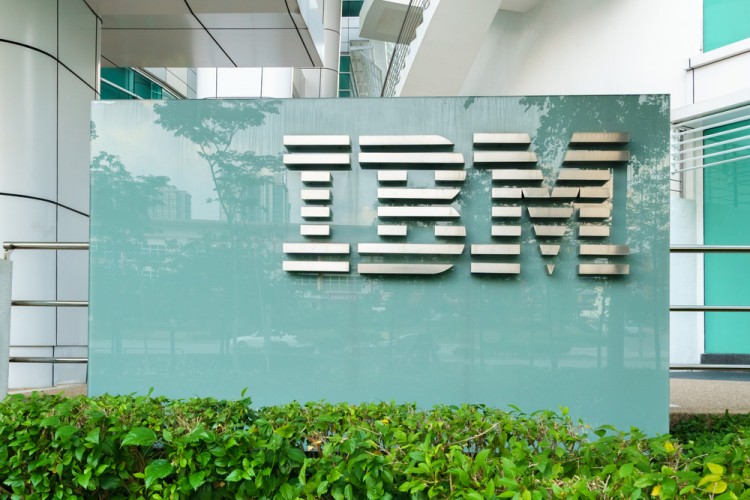For over 100 years IBM has been one of the most quintessential technology giants in America. Over the past few years, the company has been transitioning from a computer manufacturer to a leading cloud platform and cognitive solutions company. IBM, the common name of International Business Machines Corporation, is one of the largest technology and consulting companies in the world, employing over 350 thousand employees worldwide. IBM achieved a net income of 9.43 billion U.S. dollars in 2019, an increase of just over half a billion U.S. dollars from 2018. IBM has been a disappointment over the past decade, due to lagging revenues, stock performance, and slow to change. The company is in the middle of a major transition in which it is discarding big segments of their business (like building computers) and moving into new, growing areas like cloud computing, artificial intelligence, and quantum computing. Due to a decline in revenue from the old businesses, and the fact that their new businesses aren’t fully developed yet, IBM’s financial outlook has been one in a slow decline for years. When looking at IBM’s transition to the cloud, they just weren’t fast enough. And because of it, the company is now having to play catch-up in this fast-growing market segment, dominated by Amazon.com Inc (NASDAQ:AMZN)’s AWS and Microsoft Corporation (NASDAQ:MSFT)’s Azure.

Tauke / Shutterstock.com
Many on Wall Street were optimistic about the incoming CEO Arvind Krishna succeeding Ginni Rometty in early April. But that was before the coronavirus put the global economy to a halt. IBM’s stock price is currently $117.19. Year-to-date it is down 12.57%, and in a year it’s down 15.40%. The company hit a 52 week low as well as a 10 year Low on March 23, 2020, at $90.56. A little over a month earlier, IBM hit a 52 week High at 158.75 on February 6, 2020. Knowing this, I ask myself, “What’s changed with the company, other than the coronavirus?” But that’s for later in this article. IBM’s stock has basically dropped twice the amount of the S&P 500 Index since January 31. Regarding the coronavirus pandemic, the demand for IBM’s services fell due to their customer base needing to focus on their most crucial needs. Here’s how chief financial officer Jim Kavanaugh spoke on the effects of COVID-19 on the Q1 earnings call, “As we got into March…we saw a noticeable change in client priorities. With that, there was effectively a pause as clients understandably dealt with their most pressing needs.” He later added, “For those clients that did engage at the end of the quarter, there was a noticeable change in priorities where focus very quickly shifted to the stability of their operations and preservation of cash. They moved ahead with spending that addressed immediate and essential needs, including running mission-critical processes and securing a remote workforce.”
Other factors hurting IBM because of COVID-19 include having over 75% of its revenue coming from the United States and Europe (hardest hit by the virus), and that their costs of products and service is generally on the high side. Because of all of this and the uncertainty surrounding COVID-19, IBM opted to withdraw its full-year guidance for 2020. And on May 22, soon after Arvind Krishna took over, announced layoffs across multiple divisions, due to the outbreak. It was said to have been one of the largest rounds of layoffs in the company’s history.
Unfortunately for IBM, analysts covering the company on Wall Street are expecting it to slump in the coming year, and to lag behind its competition. Revenues are once again expected to fall 3.9% next year, which is an area IBM continues to struggle with. On the other hand, companies in the wider industry are to grow by 9.6% during the same period. Out of the four largest cloud service providers, IBM is growing at the slowest rate and has the smallest market share as well. Simply Wall Street sees IBM’s earnings growing 6.9% per year, while the U.S. market will grow 22.6% per year. They also see the company growing earnings, but not significantly, It’s earnings growth over the past year is 4.4%, underperforming the IT industry’s earnings growth at 15.4%. At the current valuation, IBM has a forward price to earnings ratio of around just below 10, compared to the S&P 500’s average forward Price to earnings ratio of just above 15. After looking at these numbers, you’re forced to ask yourself, “I see IBM as a potential value stock, but can I also see it as a growth stock as well?” If not, there may be other companies to choose to invest in that are both cheap and will bring you more profits during this volatile stock market we’re presently in. Let’s take a look.
Is Big Blue A Stock For You?
IBM, for all the disappointment it has given its shareholders over the past decade, actually has a lot of things going for it during the coronavirus pandemic. Remote-work and video conferencing are a friend to IBM, the transition into hot tech growth areas such as 5G networks, artificial intelligence, the cloud, and quantum computing plays into IBM’s strength. Their 34 Billion dollar Red Hat acquisition in 2019 has started to positively impact IBM’s 2020 1Q revenues, and the architect of the deal, Arvind Krishna, became the new CEO for the company at the beginning of the year. Finally, IBM is a solid value buy for a giant tech company that pays a very nice dividend. So while IBM trails Amazon, Microsoft, and Google significantly in the cloud space, the company has the potential to gain some ground and earn some respect on Wall Street under Krishna’s forward-thinking guidance.
The coronavirus forced companies to have their employees work from home. Many are going to continue once the pandemic is over. IBM has been leading a giant effort to help its clients transition to and manage remote work operations. There is a shift in spending to cloud providers and security and away from PCs and servers. Those companies on the cloud most likely will emerge stronger as their employees work from home. IBM’s effort to expand its AI and cloud expertise to its clients during this period of transition should accelerate its growth in the space. “The key area of focus is to ensure that IBM leads into two major transformational journeys our clients are on, Cloud and AI,” CEO Arvind Krishna said in IBM’s first-quarter earnings call. “I believe that what we are going through today with the shift to remote work, automation, application modernization will accelerate our client shift to hybrid cloud. This gives me immense confidence in our future.”
Growth for IBM will likely rise further as Krishna seeks to de-emphasize or sell lower-performing divisions. The global hybrid cloud market is estimated to grow in size from $36.14bn in 2017 to $171.93bn in 2025. David Parker, global partners and alliances for IBM at Red Hat, sees IBM and Red Hat is a great fit by, “Teaming together to deliver mutual clients open hybrid cloud solutions that leverage the industry expertise IBM has had for years combined with Red Hat’s proven technology and platforms.” I feel this gives IBM a competitive edge as a cloud provider. And with the coronavirus onset, their merging paths come at a better time. Also, The global artificial intelligence market size is expected to reach USD 390.9 billion by 2025, and IBM has been developing this technology longer than any other tech company. In the 5G arena, the market size is expected to reach 58.17 Billion dollars by 2025. IBM entered the segment in May, announcing that it is releasing new edge computing solutions and services, powered by Red Hat, designed to help enterprises roll out, deploy, and manage 5G networks. Finally, Quantum computing may represent early-stage technology, but the market potential is enormous. And IBM has been a major force towards pushing this next-generation computing development into the spotlight. Actually, they have been focused on this for some time. So, as I’ve laid out, IBM is right at the forefront of the hottest tech segments out there today. I definitely see them as a growth stock, because they have an abundance of knowledge and expertise, a strong free cash flow (reaching 11.9B last year) to support all of their endeavors, and seems to be thriving under Krishna’s new leadership.
In times like these on Wall Street, where huge gains are paired with huge losses, it helps to find a stock that pays their shareholders a great dividend. IBM is one of the few big tech companies that do. This means that it doesn’t matter if the market is up or down for the day, you’re guaranteed to make money on your dividends. And IBM pays the 4th highest dividend of all Dow Jones stocks. On top of that, it has recently become a Dividend Aristocrat. On April 28, the company announced it would be increasing its dividends for the 25th year in a row. The $0.01 means that investors will be earning $1.63 per share every quarter. At a price of around $117, that means the dividend yielding 5.56% per year. Josh Peters said, “Dividends may not be the only path for an individual investor’s success, but if there’s a better one, I have yet to find it.” Checkmark, IBM.
Finally, because of IBM’s checkered past, along with a current balance sheet that raises some red flags, IBM can be bought right now at a nice discount. IBM’s stock hasn’t shown a lot of volatility since early April, which is nice. The company is trading well below its fair value, and it’s PE Ratio is much lower than its industry average, both good signs. Finally, when do you find an iconic tech giant trading at 27.5% below its fair value? I feel that IBM is re-positioning itself as an industry leader in cloud services, which is so vital in businesses moving towards a remote-work model. The company is also at the forefront of other emerging tech segments as well. Wall Street tells a story of IBM as being a stalled business, left behind by the trail-blazing companies named Microsoft, Amazon, and Google. But inside this battered business lies a fantastic long term growth story developing beneath the surface. Because of it, the dividend you receive, and the price you can pay right now, I’m all in on IBM.
Disclaimer: This material should not be considered investment advice. After Further Review…The Stock is Reversed or Bob Schless are not registered, investment advisors. Under no circumstances should any content from this blog, website, articles, videos, seminars or emails from After Further Review…The Stock is Reversed or Bob Schless should be used or interpreted as a recommendation to buy or sell any type of security or commodity contract. This material is not a solicitation for a trading approach to financial markets. Any investment decisions must in all cases be made by the reader or by his or her registered investment advisor. This information is for speculative purposes only.
Bob Schless
Blog writer for After Further Review…The Stock is Reversed
afterfurtherreview.online
info@afterfurtherreview.online
Facebook: After Further Review The Stock Is Reversed
Instagram: bobschlessafr
Twitter: @schless_bob
LinkedIn: linkedin.com/in/bobschless




